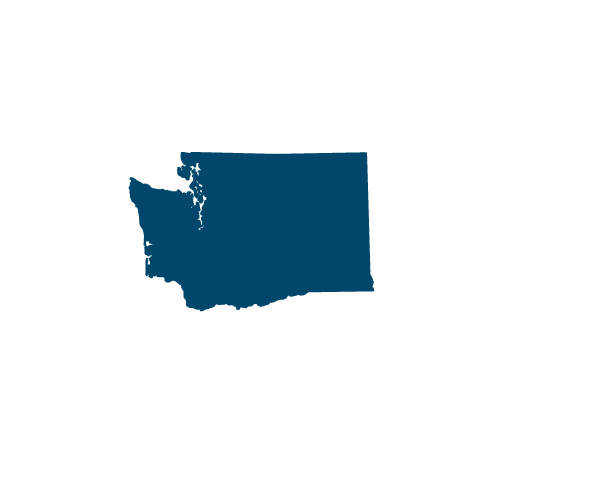Public Health’s Use of Digital Tools During COVID-19
May 10, 2022
This brief describes decision-making amongst health agency leaders and their informatics staff as they selected and implemented digital resources to support COVID-19 pandemic response. We also describe ASTHO’s COVID-19 Technology & Digital Tools Inventory as a supplement health agency leaders used in decision-making.
Tracking Health Agency Implementation of COVID-19 Technology and Tools
Beginning in May 2020, ASTHO worked with partners from CDC, with input from the National Association of City and County Health Officials, the Council of State and Territorial Epidemiologists, and the National Governors Association, to compile information on of the array of digital tools used to support COVID-19 response in the 50 states, five U.S. territories, three Freely Associated States, and Washington, D.C. The resulting COVID-19 Technology & Digital Tools Inventory was shared on a publicly available website, with information organized into six categories: surveillance, case investigation, contact tracing, symptom tracking/monitoring, proximity technology/exposure notification, and data visualization. The website aimed to provide public health practitioners with a searchable platform to explore the use of digital tools during the pandemic, and visualizations were designed with input from intended audiences at health agencies.
Exploring State and Territorial Health Agency Experiences
To better understand state and territorial health agency (S/THA) experiences adopting and implementing digital tools and technologies during the COVID-19 pandemic, and their use of ASTHO’s COVID-19 Technology & Digital Tools Inventory, ASTHO conducted two focus groups and one survey in December 2021 with members of its Informatics Directors Peer Network (IDPN). During the focus groups, twenty-one S/THAs shared their experience with digital tools, and the role technology played in supporting their COVID-19 response. Ten S/THAs participated in an online survey to provide additional feedback.
Integrating Digital Tools to Support COVID-19 Response
We found that the COVID-19 response required S/THAs to rapidly select and integrate new digital tools into their workflows. Some groups modified existing tools to meet COVID-19 response needs, with success:
“We were able to automate three overarching areas of contact tracing: case investigation, contact identification and contact notification,” one S/THA employee responded in the survey. “We used existing data visualization infrastructure to rapidly stand up public and internal dashboards. Using EpiTrax allowed us to take advantage of existing infrastructure for reporting information to CDC. Investigators and epidemiologists from throughout the state were familiar with EpiTrax so minimal training was required to initiate a robust response.” However, some S/THAs attempted to adopt new digital tools, with limited success: “Some of the newer tools developed specifically for COVID didn't take into account common data quality processes or data messaging standards,” one S/THA employee noted. “A lot of them were also very narrowly-scoped for a particular aspect of the COVID response, which made it difficult to integrate or expand to other diseases in the future. These tools are also expensive and unlikely to be funded long-term by public health.”
Leveraging the COVID-19 Technology & Digital Tools Inventory to Inform Decision-Making
Focus group participants and survey respondents used ASTHO’s COVID-19 Technology & Digital Tools Inventory to increase awareness of the technologies other health agencies were using to support pandemic response. Some health agencies used the inventory to compare pricing models across agencies, or to review the tools other jurisdictions were using to inform their own technology procurement. The inventory also allowed S/THAs to identify others using similar tools, fostering cross-jurisdictional connections to share advice and lessons learned. The practice of monitoring digital technologies used during a pandemic response warrants additional consideration, as it appears to have been useful to ASTHO’s members.
S/THA Spotlights: Adopting and Repurposing Digital Tools for COVID-19 Response
 |
The Commonwealth of the Northern Mariana Islands (CNMI) piloted several versions of MITRE’s Sara Alert, which informed how the tool continued to develop and be adopted nationwide. Before piloting Sara Alert, CNMI shared their information workflow with MITRE so it could be assessed against the Sara Alert tool. This approach allowed CNMI to identify applications that met its requirements—providing a cost-effective and efficient approach to vendor selection. |
 |
Some states developed custom tools to address immediate needs. For COVID-19 case investigation and contract tracing, New Jersey customized their CommCare solution to allow local health departments to track their own cases. New Jersey’s vaccine scheduling and exposure notification apps were also customized, and the state continues to add and improve its surveillance system. |
 |
As New Mexico shifted from the National Electronic Disease Surveillance System (NEDSS) Base System (NBS) to Salesforce for its contact tracing surveillance needs, it used ASTHO’s inventory of digital tools to find other states that were using Salesforce to compare pricing models and utility. New Mexico reached out to Kentucky to learn more about how it successfully created bi-directional movement from its contact tracing Salesforce program into NBS. |
 |
Virginia leveraged its syndromic surveillance system, NBS, to improve the ingestion of case reports captured in REDCap via CDC’s EpiConnect tool. Microsoft Dynamics was then used to develop a case management solution, referred to as VCAMS, where case data was populated from NBS. Likewise, NBS was also updated with information from VCAMS. Finally, Virginia integrated its IIS into NBS via some of the default capabilities within the surveillance system. |
 |
Washington state leveraged a combination of the Microsoft Dynamics platform and Maven to support case investigation and contact tracing. It stored contact tracing data in Maven and used Microsoft Dynamics to link to existing cases or create new cases from its case investigation workflow. |